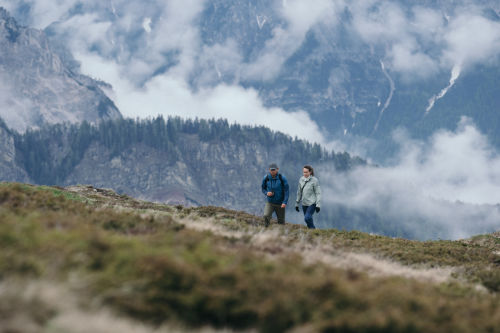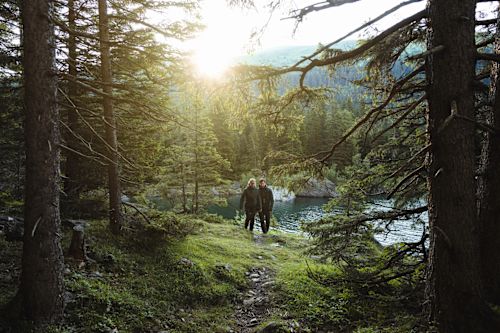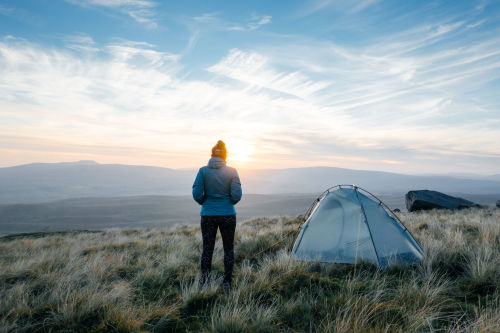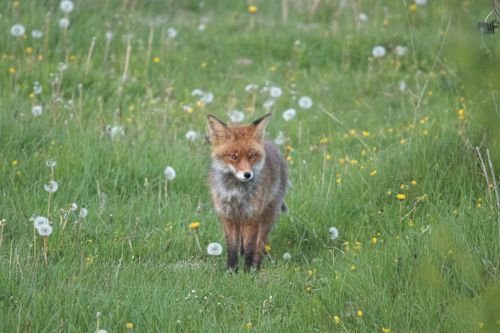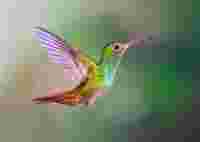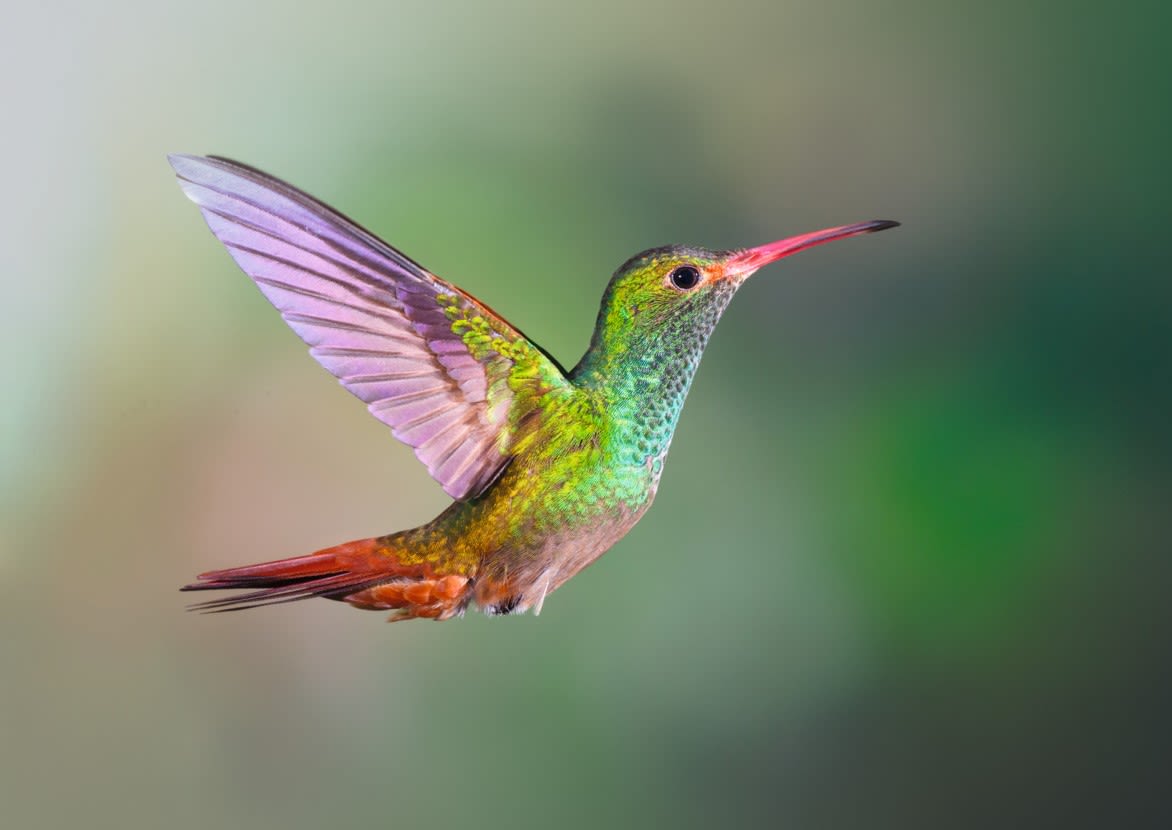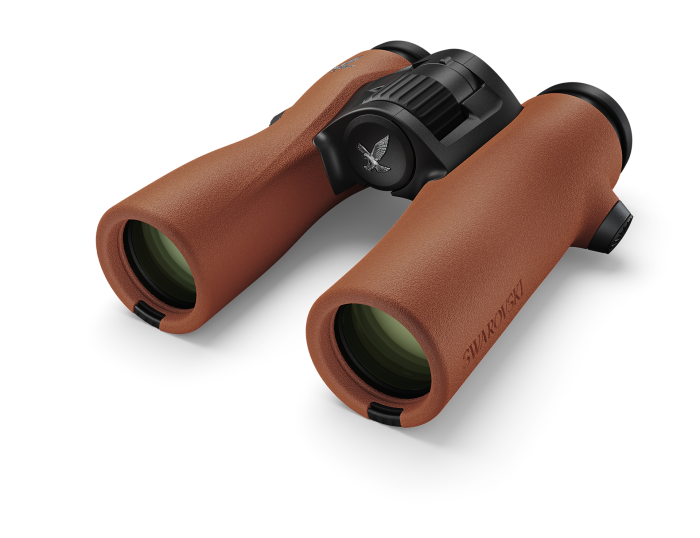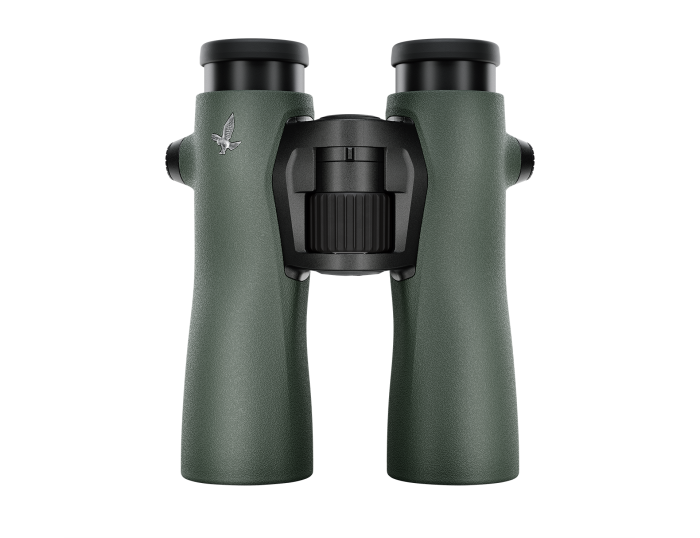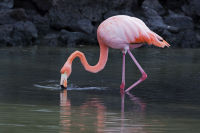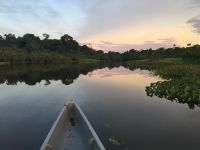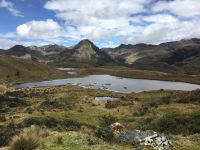Watching wildlife from the Amazon junges to the snow-capped Andes.
Euador is one of the most incredible wildlife watching destinations on the planet. It has huge appeal for people looking to dip their toe into the art of observing animals in their natural habitat for the first time. Straddling the equator, it is deeply rooted in the tropics and is at the epicenter of the world’s biodiversity.
The tropical jungles of the Amazon basin seethe with life, where enormous Scarlet Macaws cruise past Giant Otters and Amazon River Dolphins. Rising up to the west of the Amazon are the cloud forests hold-ing 80+ spectacular species of hummingbird and the reclusive Andean Bear. High in the Andes, however, the climate is cool with wide open grasslands, very lightly sprinkled with 250-kilogram (550-pound) woolly Mountain Tapirs and the 3-meter (10-foot) wide Andean Condor. Off shore, at least 17 species of whales cruise the 1,000 kilometers (600 miles) between the mainland and the Galapagos Islands, where some of the world’s largest Whale Sharks can be seen – at 18 meters (60 feet) they are even bigger than a Megalodon.
Ecuador has an impressive species diversity, but it is the number of bird species that has made it such a popular destination for wildlife watchers and birders. While the tropics wrap around the entire world like an imaginary ribbon, not all of the tropics are equal. South America commands the nickname of the “Bird Continent,” for it is there where bird diversity reaches stratospheric numbers: more than 3,700 species – that’s one third of all bird species on the planet! The tropical countries of northern South America form an elite group (Ecuador, Colombia, Brazil, and Peru) with unri-valed species diversity on both the continent and planet. Standing proof of this is the extraordinarily high number of bird species in Ecuador: 1,620 in a country that’s just a little smaller than Italy.


One of Ecuador’s most appreciated groups are the hummingbirds, known as “colibris” to locals. Though hummingbirds are not confined to the tropics, they are never as varied or conspicuous elsewhere. North America has only 19 regularly occurring hum-mingbirds, while Ecuador is home to more than 130 species (more than one third of the world’s species). Adorned with fanciful names like Gould’s Jewelfront, Golden-tailed Sapphire, and Gorgeted Sunangel, these fairies of the forests are all routinely seen at the right place. It is not just the species diversity that makes the hummingbirds in Ecuador exciting, but the experience of being surrounded by hundreds of hummingbirds at sites like Tandayapa Bird Lodge or Buenaventura Reserve is truly enchanting!
Pre-tour preparation


ACCOMODATION:
Most wildlife watching areas have good lodgings, with constant electric-ity supply, en-suite options, and many have internet access too. Western toi-lets are standard. Laundry service is frequently available, but usually only if staying two nights or more.
MONEY
Ecuador uses the US Dollar. Getting change for large bills can be difficult, so it is best to carry a selection of small bills ($1, $5, $10, $20). ATMs are widely available in big cities like Quito and Guayaquil, but can be hard to find at wildlife watching sites.
ELECTRICITY
Most areas have 24-hour electricity; this includes most Galapagos boats and Amazon lodges too. Rarely, places use a generator, which is switched off only during the middle of the night.
WATER
Never drink the water from the tap. Many birding lodges have large tanks of purified water in which to refill bot-tles that you have brought with you. A personal UV-light filter is always a good and sustainable option for your water bottle.
CLOTHING
Ο Warm hat and gloves if visiting high Andean sites
Ο Lightweight, quick-drying fabrics are recommended
Ο For humid areas, long-sleeved, lightweight shirts
and pants for the field, to reduce the likelihood
of insect bites
Ο Walking boots/shoes, with a waterproof
outer layer
Ο Swimwear for the Galapagos, where snorkeling
can accompany wildlife watching
Ο Broad-brimmed hat and/or baseball cap
for shade
OTHER ESSENTIAL ITEMS
Ο Binoculars are critical to get the most out of any
wildlife observation tour (e.g. NL Pure 42 or
CL Companion 8x30)
Ο Spotting scope. Very useful in Ecuador from roads in the Andes, or from canopy towers in the Amazon, with the compact, lightweight ATX 65 being a fantastic option
Ο Sunscreen
Ο Universal plug adaptor
Ο Insect repellent. Natural products, like lemon eucalyptus, peppermint, or citronella oils are recommended instead of toxic, DEET-based products
Ο Packet of tissues; there are not always
public restrooms close by when in the wild.
Please be sure to bury toilet tissue well
Ο The Ecuadorian government may soon require all visitors to the Amazon to get a yellow fever shot, which is a one-off vaccination for life. You will need to bring the certificate with you
Ο Regular vaccinations, such as measles-mumps-rubella (MMR), diphtheria-tetanus-pertussis,
and varicella (chickenpox), are advisable
Ο Plentiful specific personal medication
Ο Personal first aid kit
OTHER OPTIONAL ITEMS
Ο Camera – hummingbirds and tanagers make
great subjects at lodge feeders in the Andes Ο Sunglasses
Ο Refillable water bottle
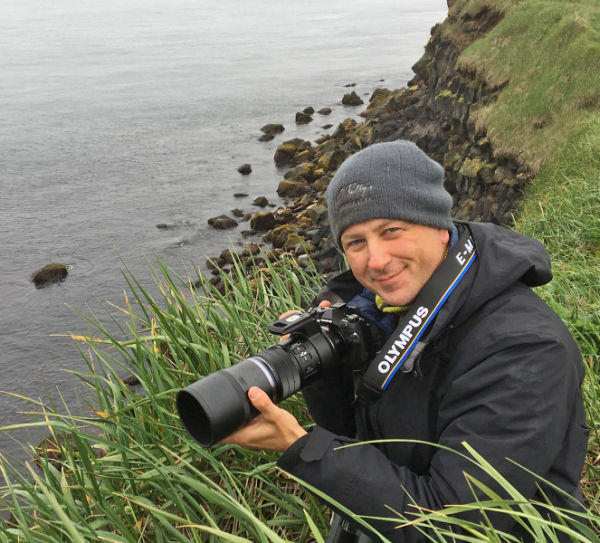
Tropical Birding tour leader
Sam Woods
Sam Woods is a full-time professional tour leader for Tropical Birding tours. During his 15 years with the company, he has been based in Quito, Ecuador. Originally from the UK, he has also guided regularly for Tandayapa Bird Lodge, within the Andes of Ecuador. A sighting of a pair of tits (Great and Blue) in a London park changed his life at the age of 11. He was an instant bird junkie, and took a degree in Environmental Science, which led him to the Andes of Ecuador for the first time in order to study hummingbirds. Since graduating, his desire for birding travel really took off, and after joining Tropical Birding, has led him to all 7 continents. He has written articles for the ABA’s Birder’s Guide magazine and other birding magazines, as well as being a co-author on several field guides to Australian birds and wildlife. He was also the primary photographic contributor to the recently published Birds of Western Ecuador: A Photographic Guide.

